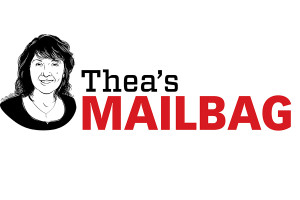Credit guru Thea Dudley has spent more than 30 years in LBM credit management. Now she’s here to answer your credit card and collection questions. Got a question for her mailbag? Contact Thea at theadudley@charter.net
Dear Thea,
In the past six months we have experienced two cases of credit card fraud. In one instance the person presenting the card had identification that matched the credit card. In the other instance, the credit card was called in and our counter sales guy did not get any additional information. Are others experiencing this and what can I do to prevent it?
Signed, Credit Card Chaos in the Carolina’s
Dear Chaos,
As a young girl, my Mom told me I could be anybody I wanted to be. Turns out this is identity theft. Apparently, some people didn’t figure that out. They like being someone else and acquiring things with others people’s money.
Some people seem to find all kinds of ways to get something for nothing. They hide behind the mantra that stealing from a company hurts no one. It is a victimless crime. A company loses some product, writes it off to product shrinkage or miscalculation and absorbs the loss. Besides, companies can afford it, and you have to admire their commitment to the entrepreneurial spirit. After all, it takes a lot of time and effort to fabricate identities, credit cards and orchestrate all the moving parts it takes to get stuff for free. So, when you really think about it, it wasn’t free. They worked really hard to create this scheme.
That is the long and winding road to your answer. Yes, we are all experiencing it. The scene plays out pretty much the same all over town: Someone calls in an order, asks to pre-pay for it, gives the credit card number, and tells the person taking the order a driver will be over to pick up the material shortly. The free market is alive and well.
Your first clue that something might be amiss is when the “customer” rolls up in a U-Haul. Or maybe it was earlier when they rattled off that credit card number. No form filled out, no signature, and you have never heard of this company or person. Sure, you could get the credit card form filled out or a signature and it may still end up in a loss but at least you did everything you could to check it out.
Creating an identity with driver’s license and credit card is a bit more sophisticated. It is also known as “synthetic fraud”. Synthetic fraud involves fabricated data elements along with bits of multiple real identity elements with the intent to use to open fraudulent accounts—like a credit card. With the technology advancements come the ugly underbelly of that technology: a more sophisticated variety of criminal and another version of fraud.
Credit card fraud is perhaps the easiest to perpetuate, especially by phone. As suppliers, we are fighting for sales, afraid to ask questions or push for more information. We also aren’t expecting it, so we are not always as vigilant as we could be.
But credit card fraud isn’t the only thing on the rise. Wire fraud is also making an appearance in our industry and hitting our long time, good paying accounts. Wire fraud is also on the rise and creating chaos on your aging and with customer’s accounts.
Here’s the short version of a wire fraud scheme: A customer receives an email from someone at your company, usually someone they have dealt with before. The email uses all the same elements of your company’s email address and instructions to the customer, asking them to wire the money to your company. Simple right?! Seems legit.
Look closer. If you really look at the email there are elements in it that will tip you off.
- The sender’s email address is CLOSE to your company’s email address but leaves off a letter.
- Spelling errors in the body of the email.
- How the email reads. Many times, our eyes skim over an email and read it as it should be written, not as it actually is. If the wording is off, very formal, or stilted, it is suspicious.
- The email instructs the customer to make changes in the wire instructions or asks them in the normal course of business to change from check or credit card to wire.
- The phone number for contacting your company is different in the email or the email asks the customer NOT to call, but to continue to email.
Accepting wire or disbarment instructions by email can be dangerous, especially if there are changes to previous instructions. Once that money is transferred and it is not in YOUR company’s account, it gets uncomfortable for everyone. The customer sent money which is now in some criminal’s account, you haven’t been paid, they are out the money (which is extremely hard to recover from) and now you are having to ask them for payment since you didn’t get it.
So, what is a credit manager to do? Educate. Educate your credit team, your sales team, and your customers. Along with credit card fraud, talk about wire fraud as well. Get it out in the open. You know what they say about mushrooms… they only grow when housed in a dark place full of poop. Same for white collar crime. If you aren’t talking about it and aware of it, the issue doesn’t get dealt with.
Ask questions and encourage your customers to ask questions. A customer can verify by calling the originator (the customer assumes it is you) using previously known contact information prior to sending funds.
Crooks go for the easy grab. If you push back, ask questions, have forms that need filled out, ask a few more questions, ask about other people in the company, and…you get the idea, they may get fed up and move on to less challenging pastures.

